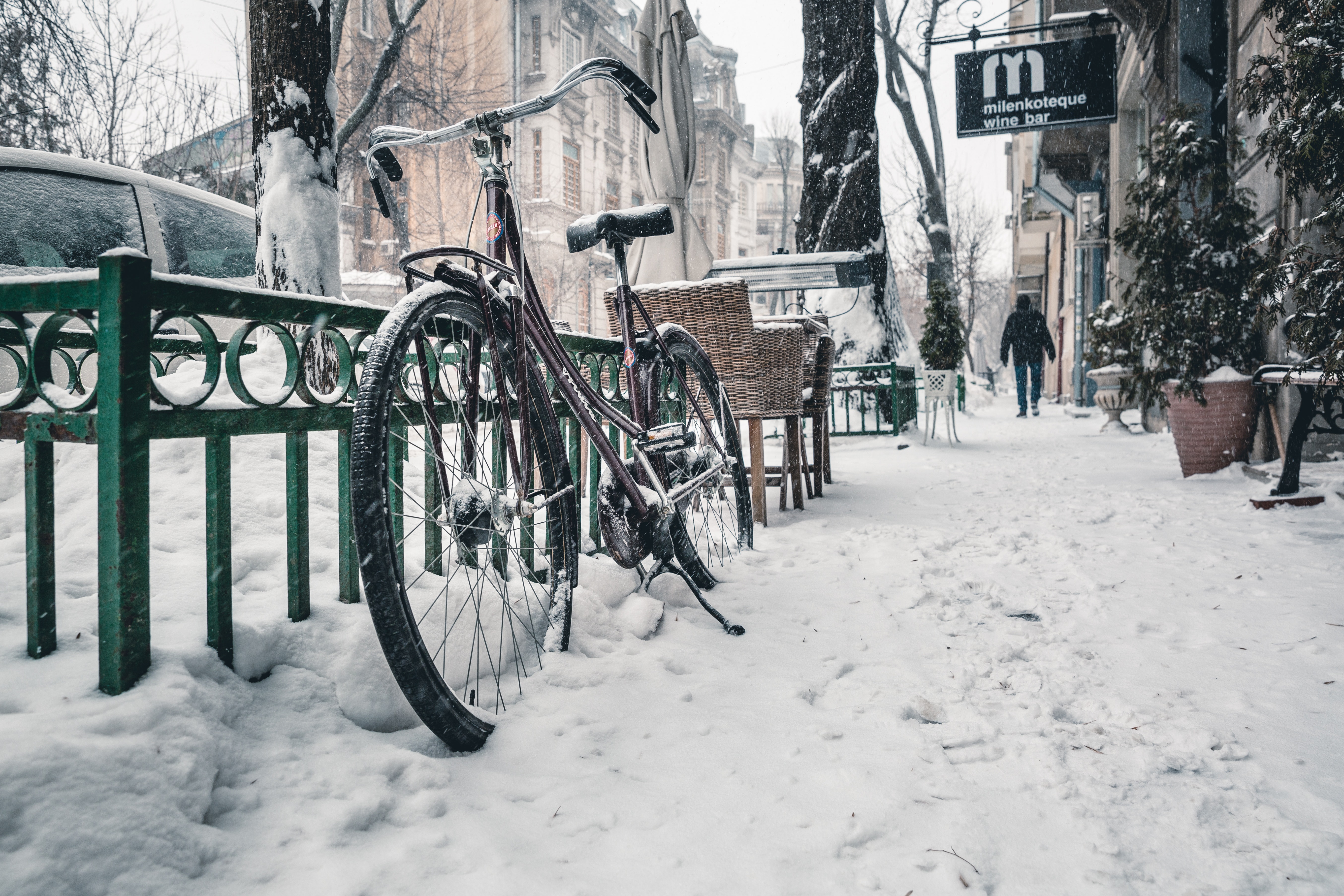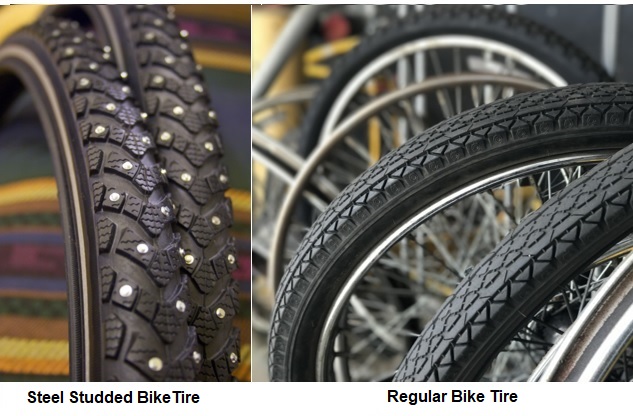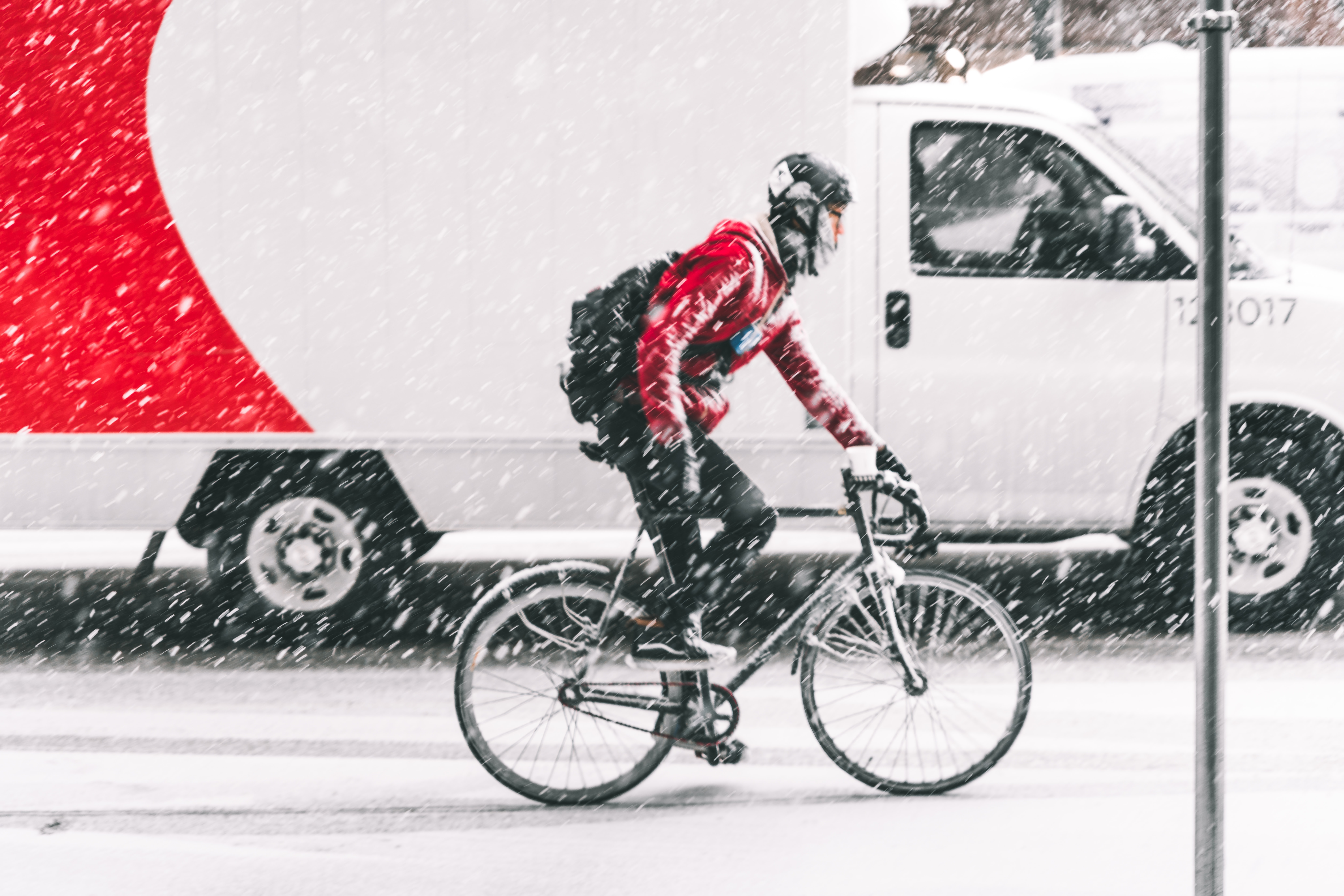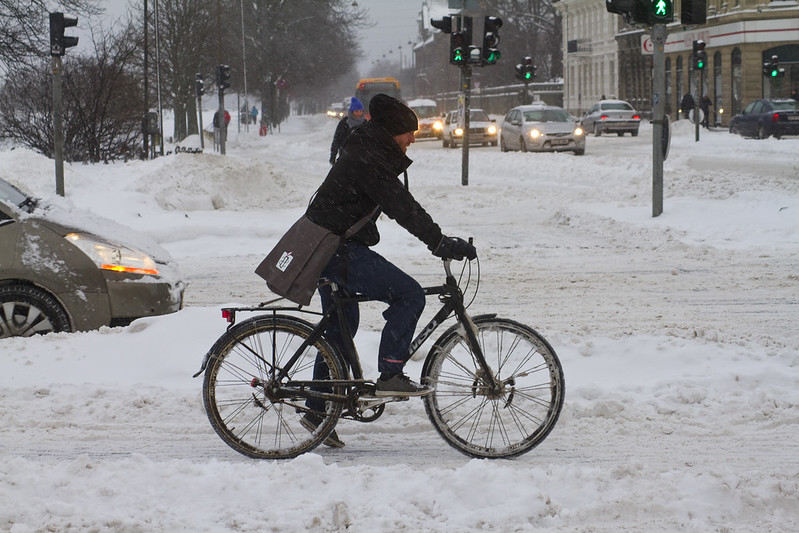Essential Winter Riding Tips
By: Paul Marsh

Winter riding is in the curb lane for most of us bike commuters and everyone should make a go/no go decision based on the expected winter maintenance along your specific route. Sometimes snow clearing means dumping snow into the bike lane and so a ride while the snow plows are still out might be better to avoid.
Every rider has to make a decision before committing to their ride. Ask yourself, really ask yourself, am I comfortable with the increased hazards that I will face on my route? If the pavement is clean, clear and dry, then this is pretty easy but if it starts snowing while you are at work and your return journey is no longer any of those things, then make your go/no go decision based on a round trip to arrive safely back home. Always check the weather before heading out and be prepared to pull the ‘chute and bail if it gets hairy. Winter riding is really rewarding and feels great on any day that works but it is just more risky than a regular summer ride and being with cars is never safe.
A mask to ease the impact of cold air on your lungs is a good idea. In the winter, the air movement along a busy car route is different than in the summer and you will find that a sore throat from the changes in air quality from car pollution is likely. So a mask that includes a particulate filter helps with that. Using a handkerchief worked for me in the past but my warm breath was directed upwards and caused my eyelashes to freeze closed. Using a good mask that fits is a good investment. Masks can be optional when riding on trails but for urban riding in the winter, air pollution levels are higher under some conditions.
Riding trails and riding in the curb lane are two different types of winter riding. With trails you can use fat tires but if you're riding in the curb lane or on any pavement, invest in steel studded winter tires. If you want to save a bit, put steel studs on the front and ride a fatter and knobby tire on the back. Losing your front wheel traction can mean going down and into traffic, which I recommend avoiding. Laying on the pavement looking at the undercarriage of a car is not a great view anytime.

Often while cycling, we’re looking to avoid adding weight so that our performance is better. Maybe some of you are still interested in performance but for me, winter riding is about getting there. You want to avoid having your hands and feet get too cold since it will start to have numbness effect on you. Check that your boots are not the type that run air flow through the tongue or worse, over your toes. You have a good chance to be in slush sometimes and it’s worth it to not have cold feet. If you are wearing bike shoes, then invest in the covers to help keep your feet warm and dry. Cold feet doing anything reduces my level of fun for any activity. The same goes for hands, I found that mitts are better than gloves and I would wear a double mitt combo – warm layer inside and wind/water mitt over top. Gloves are okay if it’s not too cold but I prefer mitts as I would sometimes slip my thumb in with my fingers to keep all warmer if I wasn’t thumb shifting for a while.

The best thing to keep you warm is to wear a good hat, toque or balaclava, something over the ears and keeps the wind off your noggin. It’s a huge challenge to wear a toque and still have a comfortable helmet fit but I never rode in the winter without both, toque and helmet. I found that I could remove some pads and swap thick pads for skinny ones and get it to work for some toques but not all toques will fit under a helmet. You can splurge a bit and get a summer helmet and a winter helmet and make sure that your winter helmet fits well when you’ve got your toque on. I’m not a sunglasses person but on a cold sunny crisp day and you’re riding into the sun, it’s a much brighter condition with all that sun reflecting off the snow. You do need to protect your eyes from wind, sun and slush. The other side of that coin is riding home after the sun is down and a good bright light in the front and back red light is a must and then add, or have, reflective stripes on your jacket. It’s better to be seen than felt.
Speaking of slush, it’s a very real prospect that a car or truck is going to swipe a slush wave in your direction. Are they thinking about you on your bike? Are they trying to make your life miserable? No, they are not thinking about you at all, ever, so this leads into the most important thing to pack for winter riding, situational awareness. I would say that being hyper vigilant about your surroundings is the way to ride in the winter. Anticipate bad things and move to avoid them before they happen.

Image credit: Mikael Colville-Andersen
Slush and salt are the main winter environment that your bike is running on. The salt is really hard on bikes, if you can rinse your bike after your ride and keep it in a heated space so that it dries and doesn’t freeze, that is the best way to reduce the corrosive effect of salt on your bike. If you can’t do it after every ride, do it when there’s a bump up in temperature above zero and let your bike dry outside. Chain oil in the winter is needed to keep your derailer working and your chain from getting sticky. If your oil is a bio oil and labelled for sustainable use, it might get gloopy in the cold. There’s specific oil made for winter riding but you can experiment with mixing different oils to thin out your chain oil for winter riding. Pay attention to your brake and shift cables and make sure they don’t seize up because not having brakes is a bad place to be. Adding a drop of oil into the cable at the top so it will run down can help but regular service is a good option too.
Is winter riding great? Yes, there’s a peace to it that’s different from riding in the summer and there’s a true sense of satisfaction to keeping to your bike all four seasons. Plus drivers will look at you from their car like you are a crazy person and there’s some real satisfaction in looking back at them through frost tipped eye lashes. Enjoy the ride, be safe always.
